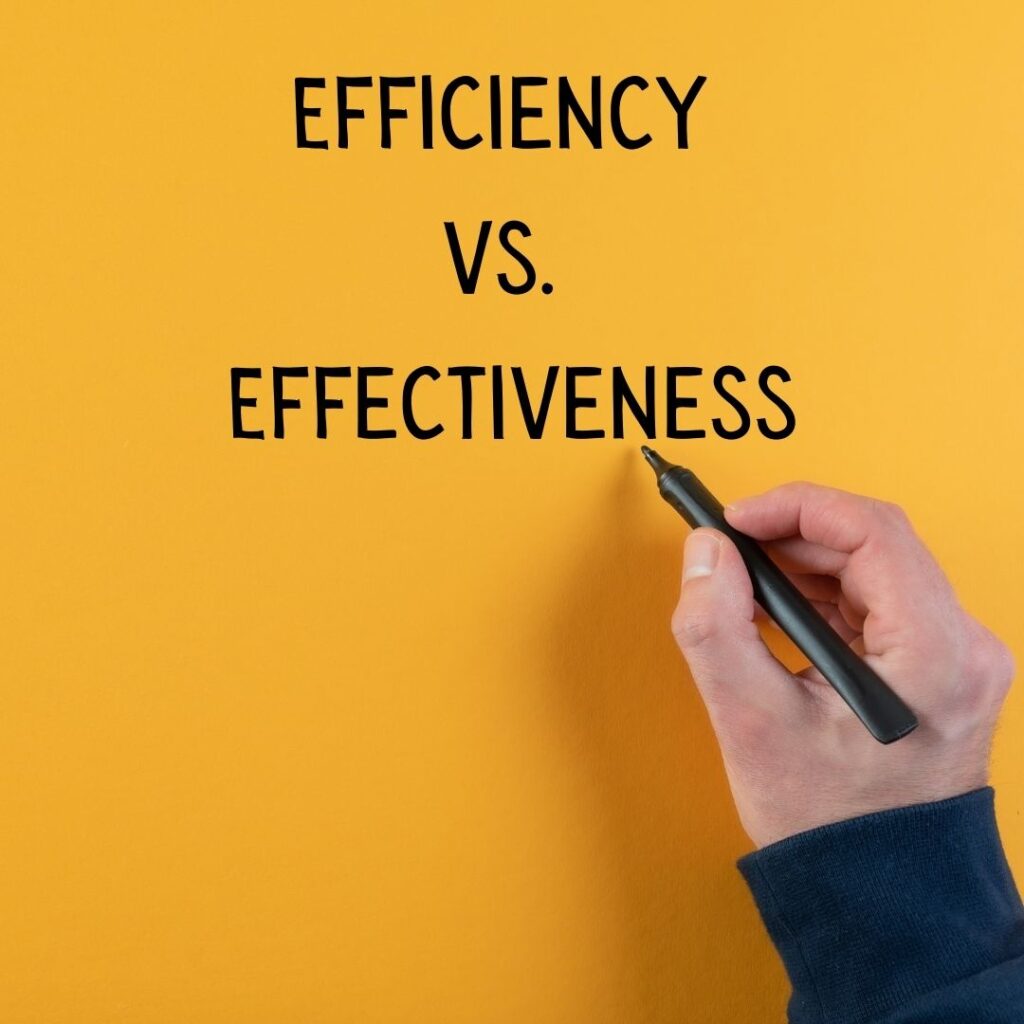SOLVING THE WRONG PROBLEM: WHY EFFICIENCY ISN’T ALWAYS THE ANSWER

In the quest to supercharge sales teams and skyrocket performance, many organizations fall into a familiar trap: equating more tools and technology with better sales outcomes. This assumption leads to a significant misalignment between the problems sales teams face and the solutions executives choose to deploy. The allure of efficiency—doing things faster and with less effort—often overshadows the critical need for effectiveness—doing the right things to create meaningful connections and close deals. In other words, DO < BETR.
The Efficiency Illusion
Consider the recent surge in sales technology adoption. With global spending on digital transformation, including sales technology, estimated to have reached 2.4 trillion in 2024 alone, the commitment to adopting advanced technologies across industries has never been greater. Salesforce recently suggested that an estimated 81% of sales teams are already investing and experimenting in AI, with approximately half fully implementing it and the other half experimenting with its applications. Despite the benefits, organizations face challenges in integrating new sales technologies, including issues with system integration, user adoption, data quality maintenance, cost management, and data security concerns. Most notably, sales effectiveness—as measured by conversion rates and customer satisfaction—has remained stagnant or even declined for many organizations. Yet, paradoxically, sales effectiveness—as measured by conversion rates and customer satisfaction—has remained stagnant or even declined for many of these organizations.
Case Study: The Tech Trap
Let’s examine the case of TechSolve Inc. (not its real name), a B2B software company. TechSolve invested heavily in a cutting-edge CRM system, automated email marketing tools, and AI-driven analytics platforms, expecting these tools to free up their sales team’s time and increase sales activities.
One year later, the data tells a sobering story: while the sales team’s activity levels increased by 20%, actual sales revenue grew by only 2%, and customer engagement scores dropped by 10%. TechSolve fell into the tech trap, believing that more technology and efficiency would automatically lead to better sales results.
The Misdiagnosis of Sales Challenges
The root of the problem lies in a critical misunderstanding: confusing the symptoms with the disease. Many sales challenges—such as low conversion rates, declining customer loyalty, and ineffective prospecting—are symptoms of deeper issues related to sales strategy, skill sets, and alignment with customer needs. Addressing these symptoms with efficiency-oriented solutions is akin to treating a fever with a cold compress without addressing the underlying infection.
Effectiveness Over Efficiency
The real solution lies in focusing on sales effectiveness. Effective sales strategies are customer-centric, data-informed, and adapt to the evolving buying landscape. They prioritize understanding customer needs, delivering personalized value, and building genuine relationships over sheer activity volume. For instance, according to Forbes, companies that adopt a customer-centric approach tend to outperform their competitors in terms of revenue generation and market share. Another study by Zapscale reports that businesses prioritizing customer experience can achieve up to 60% higher profitability.
Strategies for Enhancing Sales Effectiveness
1. Invest in Sales Training and Development: Beyond product knowledge, sales teams need training in consultative selling skills, emotional intelligence, and strategic account management. An investment in developing these competencies can dramatically improve sales effectiveness.
2. Leverage Data for Personalized Engagement: Use AI and analytics not just for efficiency but to gain deep insights into customer behavior, preferences, and pain points. This data can inform tailored engagement strategies that resonate on a personal level, significantly improving sales outcomes.
3. Simplify the Tech Stack: Instead of constantly adding new tools, evaluate and streamline the sales tech stack to ensure it supports effective sales processes and enhances, rather than complicates, customer interactions.
4. Focus on Quality Interactions: Measure sales success not by the number of calls or emails but by the quality of customer interactions. Encourage sales teams to spend more time preparing for meaningful conversations that address customer needs and challenges.
Embracing a Culture of Effectiveness
Shifting from an efficiency-first to an effectiveness-first culture requires leadership commitment, a clear vision, and a willingness to invest in long-term growth over short-term gains. It’s about choosing to solve the “Better” problem rather than the “More” problem. This shift can be challenging, but organizations like TechSolve Inc. must recognize that true sales transformation is not about doing more with less but about doing better with focus.
Final Thoughts
The journey from efficiency to effectiveness in sales is not a straightforward path. It requires a deep understanding of the real challenges facing sales teams and a commitment to addressing these challenges with strategic, thoughtful solutions. By focusing on effectiveness, organizations can break free from the tech trap, align more closely with customer needs, and achieve sustainable growth. Let’s not solve the wrong problem. Instead, let’s commit to making our sales teams more effective, one strategic choice at a time.

